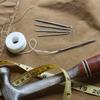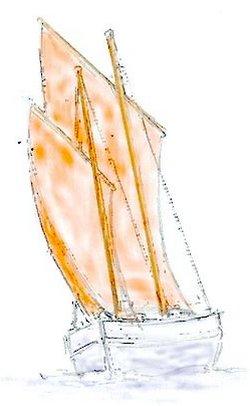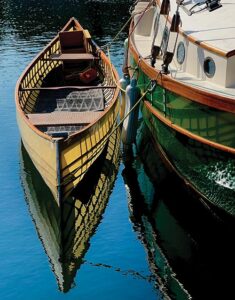- Home
- Ropes and Rigs
- Sailing Rigs
- Sail Cloth
Sail Cloth for the Average Sailor.
Traditionally sail cloth was made from flax,hemp or cotton canvas.
While cotton sailcloth is still available, most modern sails are made using modern synthetic materials.
These range from cheap and cheerful nylon and polyester to the expensive hi-tec carbon fibres.
Choosing a Sail Cloth
For
anyone thinking of making their own sail, especially if it is a small
sail and they are new to the process, they can easily and cheaply try
out their ideas and make mock-up sails from the cheapest of materials.
Polly tarp is a cheap, cheerful and relatively easy material to test
out your ideas on.
My first attempt at sail making was a polly-tarp sprit sail for a
dinghy and it survived for a whole season before it began to fray and
degrade due to UV light.
Nylon, while it is cheap, light and strong, is normally only used for spinnakers and cruising chutes because it does tend to stretch and is susceptible to UV degradation.
But by far the most commonly used material for leisure boating sails are the various types of Woven Polyester.
Polyethylene terephthalate, commonly known as Dacron is the most popular type of sail cloth for the average leisure boater due to its durability at a reasonable price.
Polyester sail cloth fabrics are sold under various trade names such as
Terylene, Tetoron, Trevira, Diolen as well as Dacron.
The woven sail cloth is usually treated with a resin filler, which
stiffens the cloth helps reduce stretch and makes it less porous.
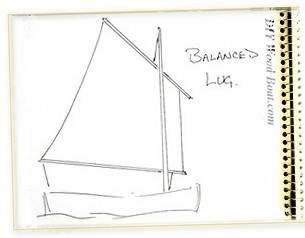
However,
this stiffness and slipperiness does making it difficult
to handle.
For small sails, a cloth with a minimal amount of resin filler will be
softer, more easy to work on and easier to handle when hoisted.
Polyesters can be either Woven fabrics or Laminated fabrics.
Laminated fabrics have been developed to retain their shape for longer but they are considerably more expensive than the woven variety and the process of sail making is more complicated.
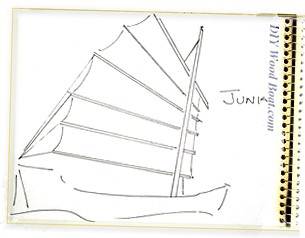
Laminated fabrics are strong, light and will retain their shape for
much longer, but at a price.
Laminates as the name suggests are made by gluing together numerous
layers of scrim, extruded plastic and woven 'taffeta', all of which
has
to be paid for.
The other 'price' is the care you must take when handling them.
They tend to be stiff and susceptible to damage from flogging, chaff
and careless folding.
They also require a great deal of expertise when building the sail.
affiliate linksWeights, Weaves and Fillers
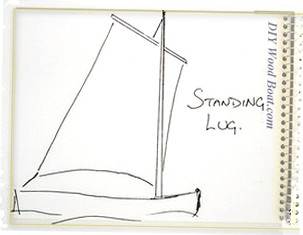
Weight is the usual method of
classifying cloth.
There seem to be several ways in which this weight is measured.
It can be the weight in ounces per square yard or ounces per linear
yard in which case it will depend on the standard with of the weave.
Or it can be in kilograms and meters.
So at best it is only an indication of the strength and thickness a
given cloth.
There are two methods for weaving sailcloth, either balanced or unbalanced.
In balanced cloth,
the warp (the lengthwise yarns) and the fill (the
crosswise yarns) are of the same weight.
With unbalanced cloth one of the yarns will be heavier to provide
greater strength in one direction.
Most modern sail cloth has the heavier yarn in the fill (across the
material).
Most new sailcloth also has a 'filler' between the yarns.
These fillers help to reduce stretch by bridging the gaps between the
yarns.
The cloth is treated with a 'resin' then passed through rollers so
the heat and pressure sets the filler between the fibres.
The fillers are also what make the sail cloth feel stiff and crinkly
and slippery.
Unfortunately these fillers will, over time and with rough handling, break down.
Caring for Your Sails
A
well made Dacron sail should last for years and years if it is looked
after.
Over time it will stretch and become a bit baggy but while it
might
loose its efficiency, it will still be useable.
The two main causes of wear are flogging which damages the filler and
UV light which damages the yarns.
Keep both to a minimum.
Make stowing you sails part of the tying up/anchoring process, something you do before taking off your sailing gear and relaxing with that coffee, or something stronger.
It only takes a few minutes to flake and cover a mainsail and while you
are doing it check for and make note of any damage that should be
repaired before hoisting it again.
If you have roller furling headsails make sure that the UV strip is
covering the sailcloth.
It's all down to basic seamanship, look after your boat and her gear
and she will look after you.
After all "She is worth it".
Previous posts
See What Others Have Posted
Cotton cloth for first sail?
I'm intending to make my own sails, and am currently reading The Sailmaker's Apprentice with an eye to practicing the techniques involved.
For my first …
Avoid the sail repair supply rip-off
Getting tired of being charged huge prices for tiny bits of waxed sail twine and a few needles?
Well here is a way to save 80% and get much much more …
How to Remove Blood Stains from Sails
I was once crewing in a race for a skipper who was proud of his new main sail.
It did look splendidly white and crisp, however it didn't ensure us a …
